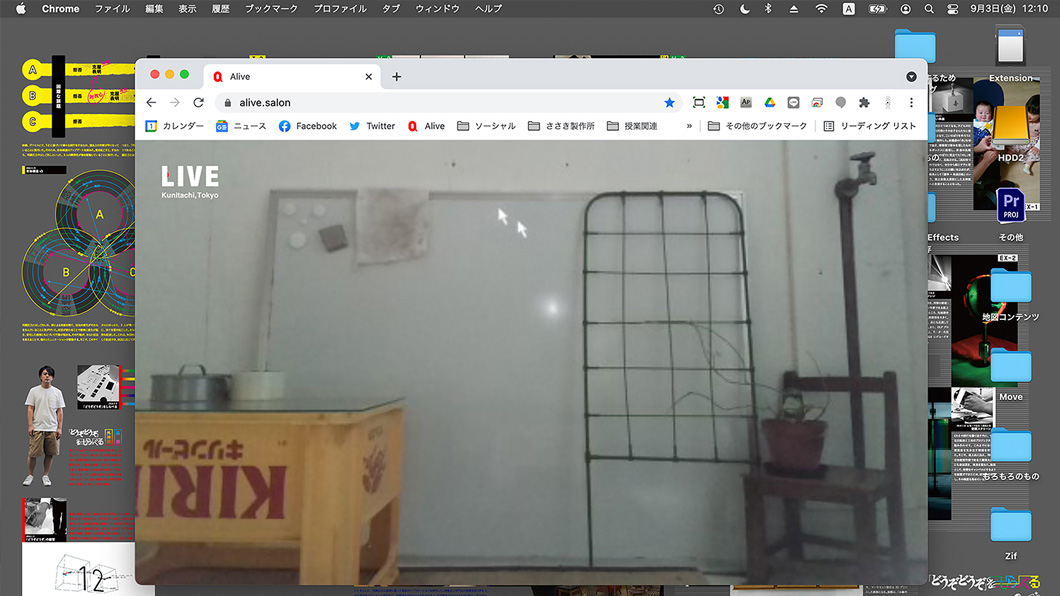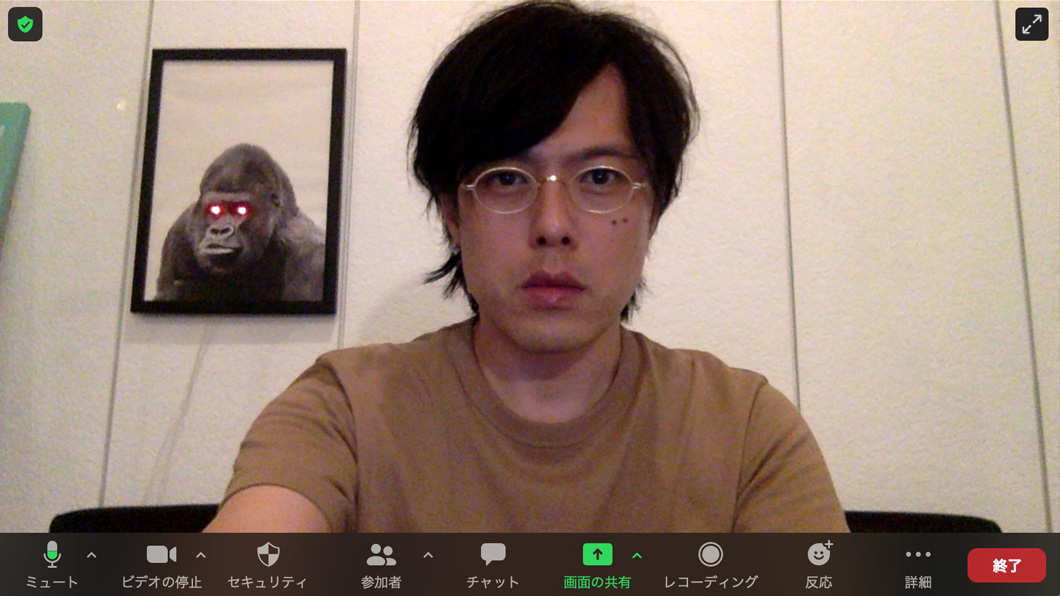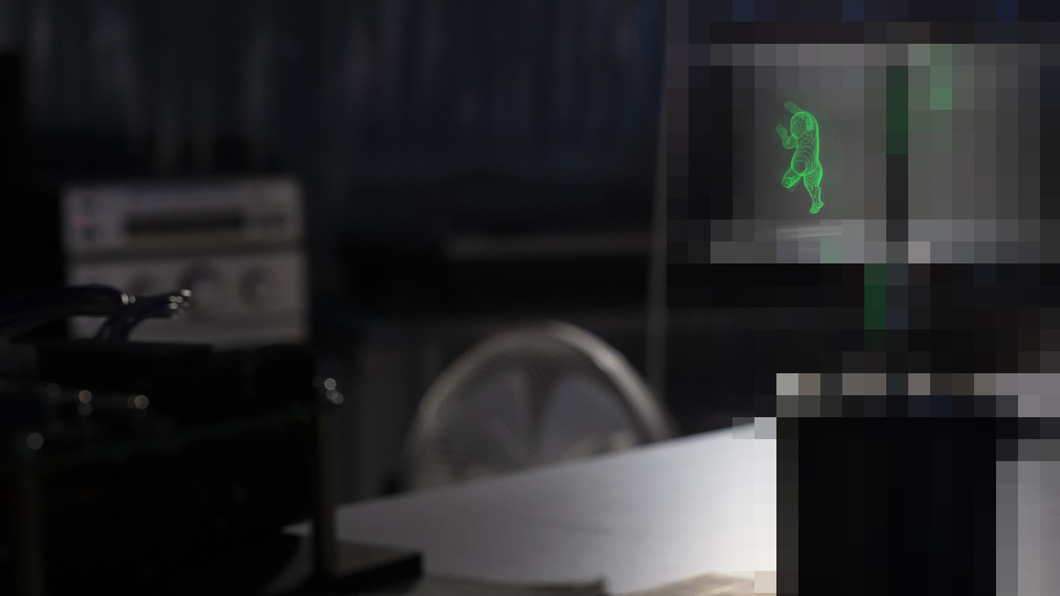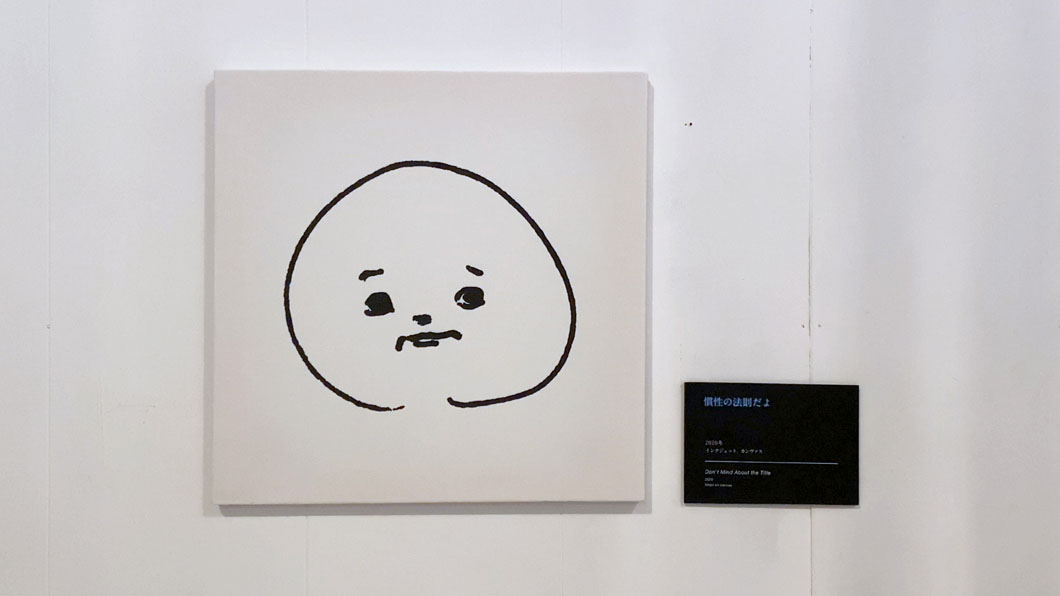
Language is a highly convenient communication tool that streamlines cognitive processing and enables rapid communication. On the other hand, due to its high semantic resolution, it has the aspect of exacerbating the fragmentation among human individuals. This work is a system that reduces the resolution of the tool and focuses only on the desire to be connected to someone.
Specifically, I built a website that allows users to warp their own mouse cursor into real space via a web browser and communicate in real time with other people gathered there. Unlike online games, where the situation is recreated by the client, this website is characterized by the ability to share actual time and space.
The feedback from the participants was about the sense of touch. When they placed the mouse cursor over the various components that made up the room, they felt as if they could feel the texture of each component, and when they overlapped with the mouse cursor of another person, they felt as if they were touching each other and had a comfort zone. It is interesting to note that the interaction also encouraged mirroring, such as following and aligning. Furthermore, when I added a function that allowed the user to leave traces, it was impressive that the remaining player wandered around the traces when one of them left, showing a movement reminiscent of a regretful farewell.
The sense of touch observed in this work are thought to be the activation of the functional areas of the brain that control bodily sensations through the interaction of the participants with the visual feedback of the mouse cursor. The mimicry of movement and traces is an intrinsic behavior of living organisms that show favoritism toward the preservation of the group/species, and the fact that this behavior is facilitated through a computer network may provide an important cognitive scientific basis for the digitization of the experience of the work itself.
Website(PC)
https://alive.salon
Award
Tokyo TDC Annual Awards 2022 Selected Work
Media
VOGUE JAPAN
NHK World “Design Talks Plus”
[more]

In March of 2020, when the Corona disaster struck, the class I was supposed to teach as a part-time lecturer went entirely online. Since I could no longer share the real space with the students, I came up with the idea of creating a system that would allow everyone to directly interact with my space online. So, during the class, I set up a poster of a gorilla in the background of my Zoom, which could be controlled remotely via a web browser (the gorilla’s eyes would light up and the sound of a conch would ring out). This enabled communication that transcended space.
[more]

This work constructs a “controllable space-time” that is different from the world we live in, as a phenomenon that occurs in the viewer’s perception. The basis of the work is a technology called “spatial screen. This technology uses a special rotating object and a projector to achieve stereoscopic vision with the naked eye without limiting the viewing range, inexpensively and simply. The author invented the projection principle of the “spatial screen” and has been improving it with his colleagues who specialize in stereolithography and metal processing. Specifically, the 3D model is cut into a circle toward the back and projected onto a special structure at a speed that the viewer’s eyes cannot keep up with, thereby creating a three-dimensional light. A pseudo-space-time is created by giving further temporal changes to the three-dimensional structure thus created. The monkeys dancing in space-time as a visual phenomenon ask questions such as what is time, what is space, what is mass for a three-dimensional object, what does it mean to “see”, what is the world as we perceive it, and what is existence. In addition, due to the fact that it does not limit the viewing area, it will realize the unprecedented activity of “surrounding the image with others and observing it.
This research was supported by JST, COI, and JPMJCE1308.
[more]

This work is a system whereby the artist prints a doodle of a face he has suddenly drawn on canvas, and visitors can anonymously post the title of the caption of the work from their own smartphones. The base is the website “It’s all the same face” ( https://onaji.org/ ), which is a site for posting interpretations of faces, and the latest postings are reflected in the caption each time. The interpretation of each viewer, which is updated and shared at will, becomes the official work title of the face, placing the artist and the viewer on the same layer, while the viewers also interact with each other, and everyone committed to the work forms a complicity relationship.
YouTube
[more]




